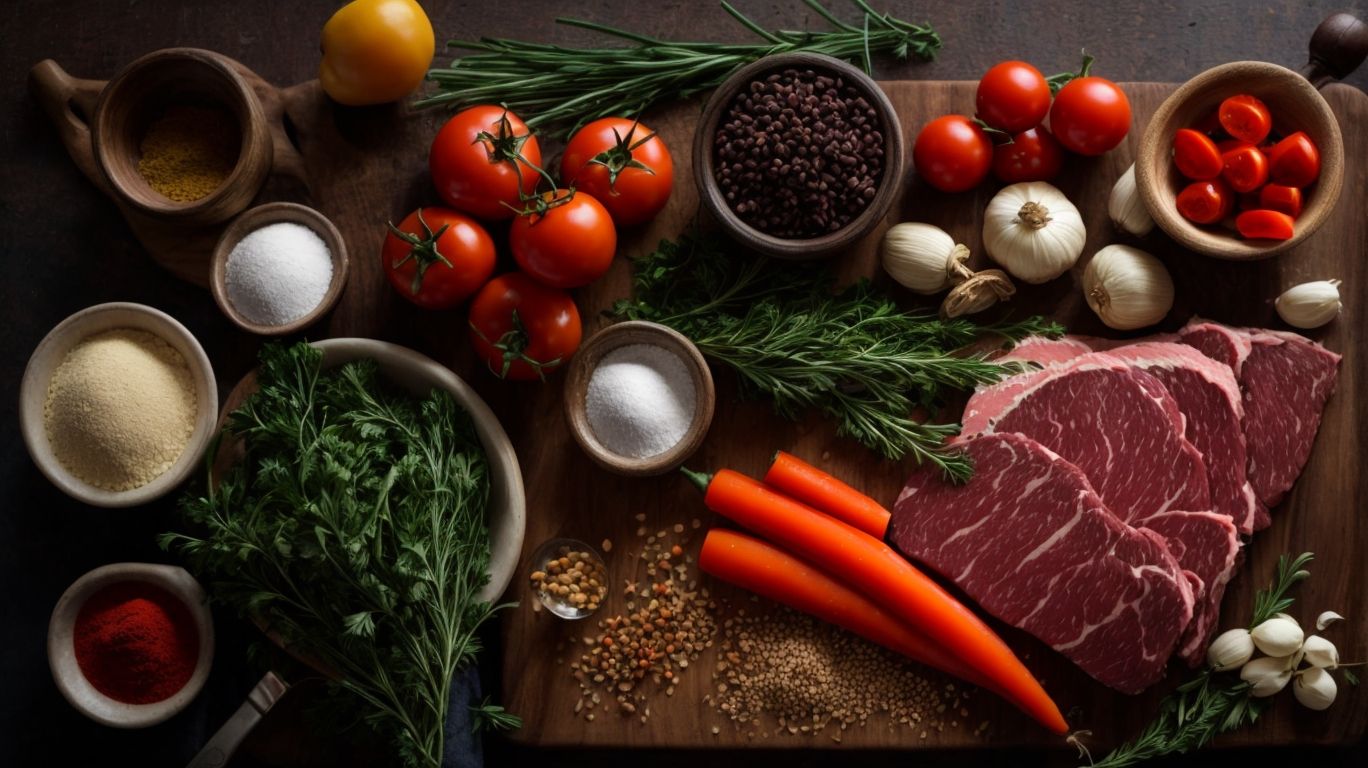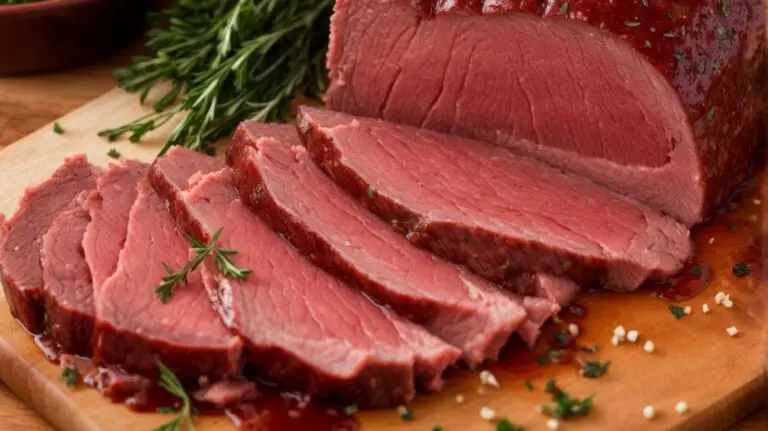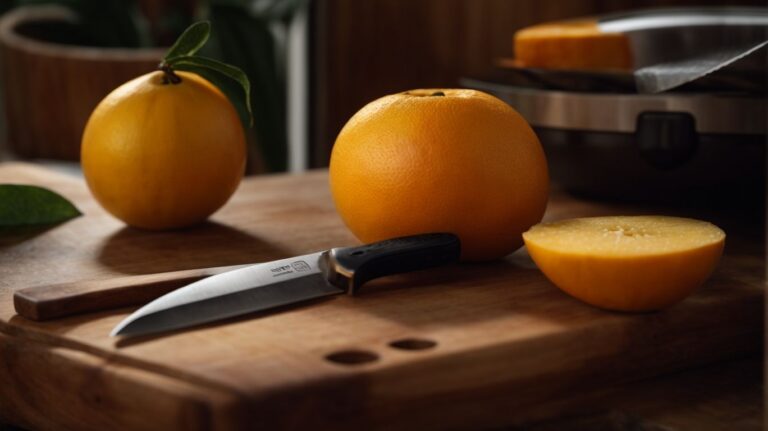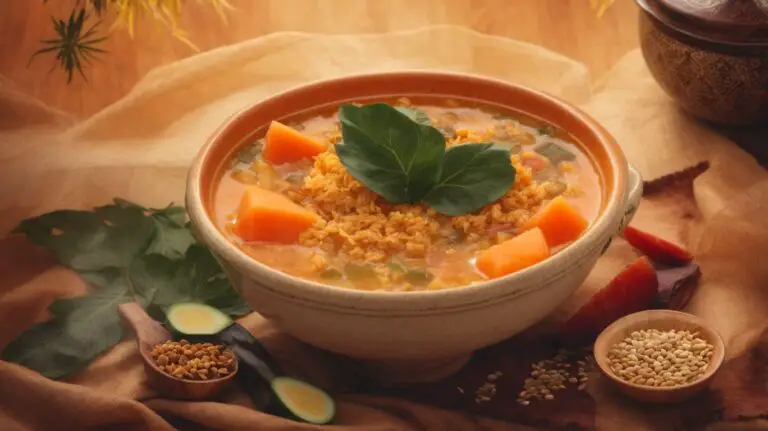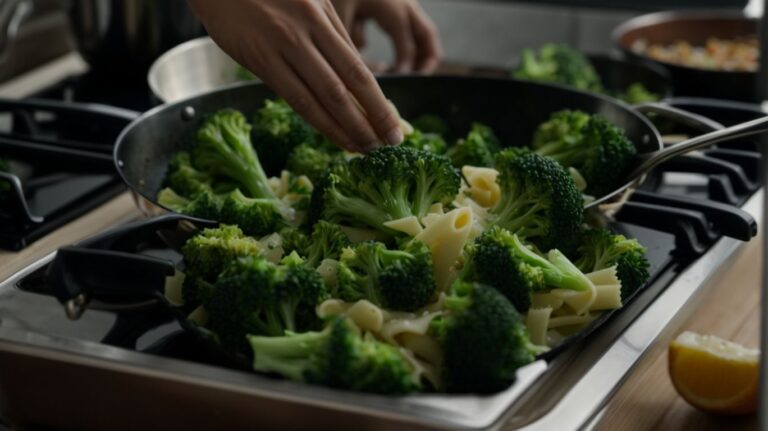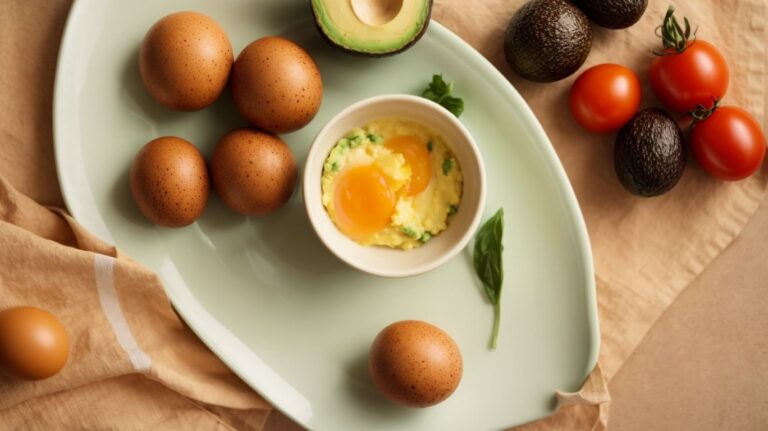How to Cook Meat for Beef Stew?
Are you looking to make the perfect beef stew but not sure where to start?
In this article, we will cover everything you need to know about choosing the best cut of meat, preparing it for stew, selecting the right ingredients, cooking methods, serving suggestions, and even how to store and reheat your stew for later.
Whether you’re a seasoned chef or a cooking novice, this guide will help you create a delicious and hearty beef stew that will impress your friends and family.
Let’s get cooking!
Key Takeaways:
What is the Best Cut of Meat for Beef Stew?
Choosing the best cut of meat for beef stew is crucial to achieving a tender and flavorful dish. One of the top choices for beef stew is the versatile chuck roast, known for its rich taste and succulent texture.
Chuck roast comes from the shoulder area of the cow, a well-exercised part that brings a deep, beefy flavor to stews. Its marbling of fat melts during the slow cooking process, enhancing the dish with moisture and tenderness. This cut is also budget-friendly, making it a popular option for home cooks looking to create a satisfying meal without breaking the bank.
How to Choose the Right Cut of Meat?
When deciding on the right cut of meat for your beef stew, consider factors such as the meat’s marbling, fat content, and tenderness. Chuck roast, a popular choice for stew recipes, offers a perfect balance of flavor and juiciness.
One of the key reasons why chuck roast is often recommended for beef stew is its inherent ability to tenderize and infuse rich flavor into the stew as it cooks slowly. This cut comes from the shoulder area of the cow, providing a good amount of connective tissue that breaks down during the long cooking process, resulting in a velvety, melt-in-your-mouth texture. Chuck roast has enough fat to keep the meat moist during cooking, ensuring a succulent and flavorful stew.
How to Prepare the Meat for Beef Stew?
Preparing the meat for beef stew involves trimming excess fat, cutting the chuck roast into chunks, and seasoning it for optimal flavor infusion during cooking. Properly prepped meat sets the foundation for a delicious and hearty beef stew.
When trimming the excess fat from the chuck roast, it’s important to leave a thin layer to enhance the stew’s richness.
The chunks should be cut into uniform sizes to ensure even cooking and a consistent texture in the stew.
Seasoning the meat with salt, pepper, and herbs not only adds flavor but also helps to tenderize the beef during the cooking process.
Marinating the meat before cooking can further enhance the taste and tenderness, allowing the flavors to meld together perfectly.
These meticulous preparation steps ensure a mouthwatering beef stew that will impress even the most discerning palates.
What are the Steps for Preparing the Meat?
To prepare the meat for beef stew, start by trimming any excess fat from the chuck roast, then cut it into uniform cubes for even cooking. Season the meat with herbs and spices to enhance its natural flavors before incorporating it into the stew.
Once you’ve trimmed the fat and cut the chuck roast into cubes, the next step is to sear the meat in a hot pan to develop a rich caramelized flavor. This step is crucial as it adds depth and complexity to the stew. Remember to work in batches to avoid overcrowding the pan, allowing the meat to brown evenly.
After searing the meat, deglaze the pan with a bit of red wine or beef broth to capture all those flavorful browned bits. This step not only adds a delicious base to your stew but also tenderizes the meat further.
What are the Ingredients for Beef Stew?
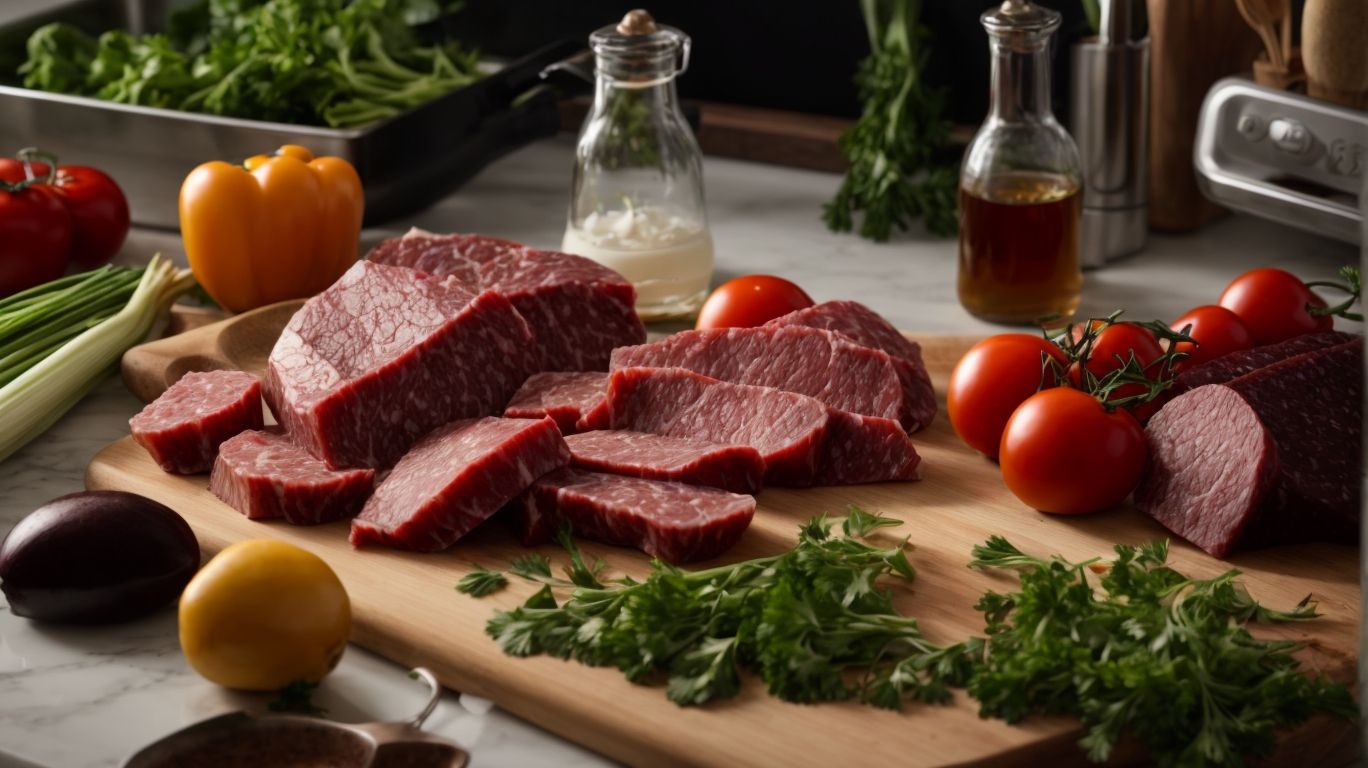
Credits: Poormet.Com – Frank King
The essential ingredients for a flavorful beef stew include tender chuck roast, aromatic onions, hearty potatoes, sweet carrots, savory garlic, and a rich broth.
To ensure the success of your beef stew, it is crucial to start with high-quality ingredients. Chuck roast is a prime cut known for its tenderness and juicy flavor, making it perfect for slow cooking and infusing the stew with rich taste. Fresh vegetables like onions, potatoes, carrots, and garlic add depth and complexity to the stew, providing a mix of textures and flavors that complement the beef. The broth, whether homemade or store-bought, serves as the base that ties all the ingredients together, enhancing the overall taste of the stew.
What are the Essential Ingredients?
The essential ingredients for a delicious beef stew are flavorful broth, tender chuck roast, sweet carrots, and hearty potatoes.
Regarding creating a mouthwatering beef stew, the quality of the broth cannot be overlooked. A rich and aromatic broth sets the foundation for a flavorful dish, infusing every bite with warmth and depth of flavor. Whether you opt for homemade broth or a high-quality store-bought version, this element plays a crucial role in elevating the overall taste.
Along with the broth, the choice of vegetables like carrots and potatoes is paramount in beef stew preparation. Carrots add a natural sweetness and vibrant color, while potatoes contribute to the stew’s heartiness, soaking up the savory flavors of the dish.
What are the Optional Ingredients?
While the essential ingredients form the foundation of beef stew, optional additions such as aromatic onions, savory garlic, flavorful wine, and fragrant herbs can elevate the dish to new heights with added depth and complexity.
Onions are often considered the unsung heroes of beef stew, imparting a subtle sweetness and richness to the overall flavor profile. They also provide a delightful texture that complements the tender meat perfectly. Garlic, with its pungent and aromatic notes, adds an extra layer of complexity, enhancing the savory elements of the dish.
Regarding incorporating wine, whether it’s a robust red or a dry white, the alcohol content cooks off during simmering, leaving behind a nuanced richness that marries beautifully with the meat and vegetables. Fresh or dried herbs like thyme, rosemary, or bay leaves not only infuse the stew with fragrant undertones but also contribute to a more vibrant and well-rounded taste profile.
How to Cook Beef Stew?
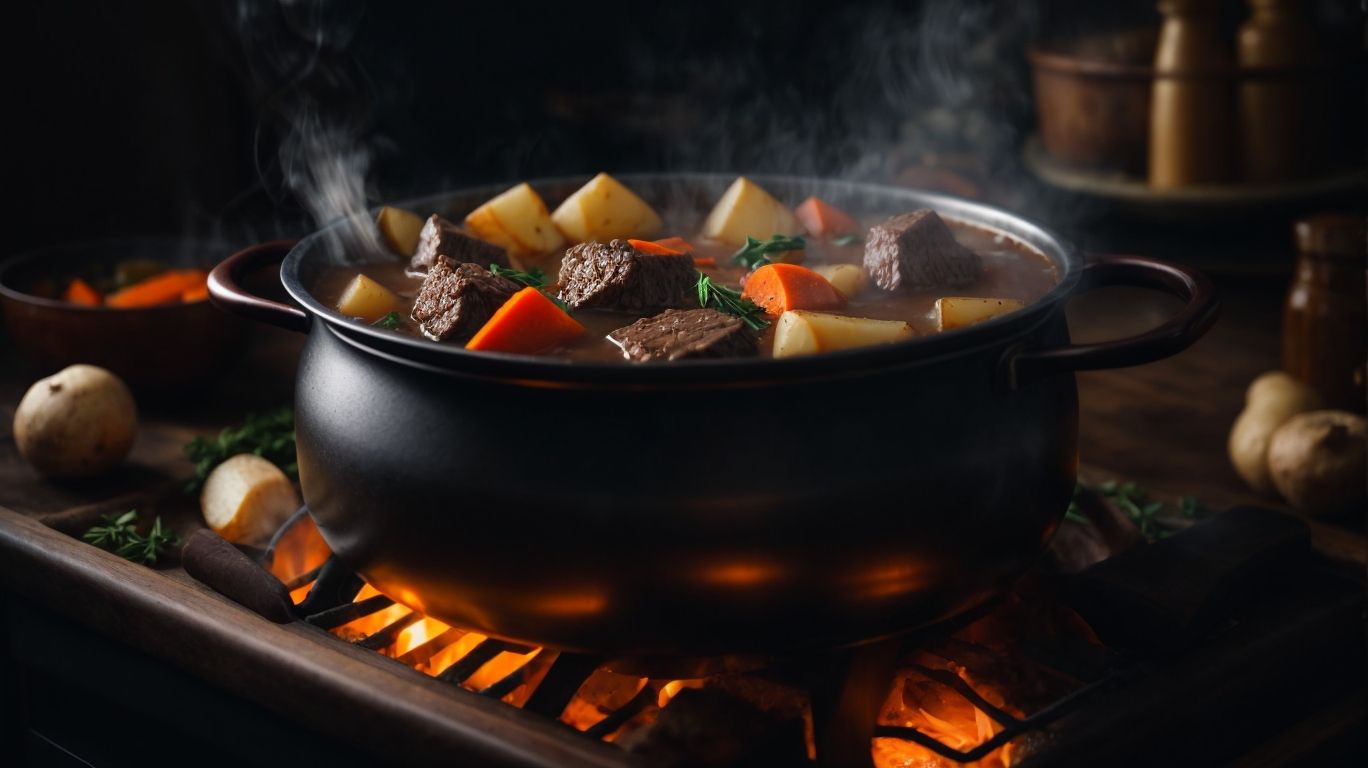
Credits: Poormet.Com – Keith Clark
Cooking beef stew involves slow simmering the ingredients to develop rich flavors and tenderize the meat. The process often includes braising the stew meat in the oven, creating a hearty and satisfying dish perfect for chilly days.
When preparing beef stew, it’s vital to choose the right cuts of meat – typically tougher, less expensive cuts such as chuck or brisket work best. These cuts benefit from the slow cooking process, transforming into melt-in-your-mouth goodness.
To start, you’ll sear the meat in a hot pan to lock in the juices and enhance the flavor profile. Next, sauté onions, garlic, and root vegetables to build a flavorful base.
After deglazing the pan with wine or broth to incorporate all those delicious caramelized bits, transfer everything into an oven-safe pot. Add herbs and seasonings like thyme, rosemary, and bay leaves, then cover the stew and let it braise in the oven until the meat is tender.
What are the Different Cooking Methods for Beef Stew?
Beef stew can be cooked using various methods such as slow cooking in a Dutch oven, searing the meat for added flavor, and braising to achieve tender results. Each cooking technique contributes to the overall richness of the stew.
Slow cooking in a Dutch oven is a traditional and popular method for preparing beef stew. This technique involves cooking the stew over low heat for an extended period, allowing the flavors to meld and the meat to become incredibly tender. Searing the meat before adding it to the stew pot helps to caramelize the surface, enhancing the depth of flavor. Braising involves cooking the meat in a small amount of liquid at a low temperature, resulting in a deliciously moist and succulent dish.
What is the Best Cooking Method for Beef Stew?
The best cooking method for beef stew involves creating a rich sauce through slow simmering, allowing for a hands-off approach to cooking while maximizing flavor development. This technique ensures a flavorful and tender beef stew.
By allowing the beef and vegetables to simmer slowly over low heat, the flavors have time to meld together, resulting in a deeply satisfying dish. The long cooking time also helps to tenderize the beef, making it melt-in-your-mouth delicious.
Slow-cooking methods like braising or using a slow cooker are ideal for this dish, as they allow the natural juices and spices to permeate the meat and veggies. Enhancing the flavor profile can be achieved through the addition of aromatic herbs and spices, such as thyme, rosemary, and bay leaves, which infuse the stew with a rich, savory essence.
How to Serve Beef Stew?
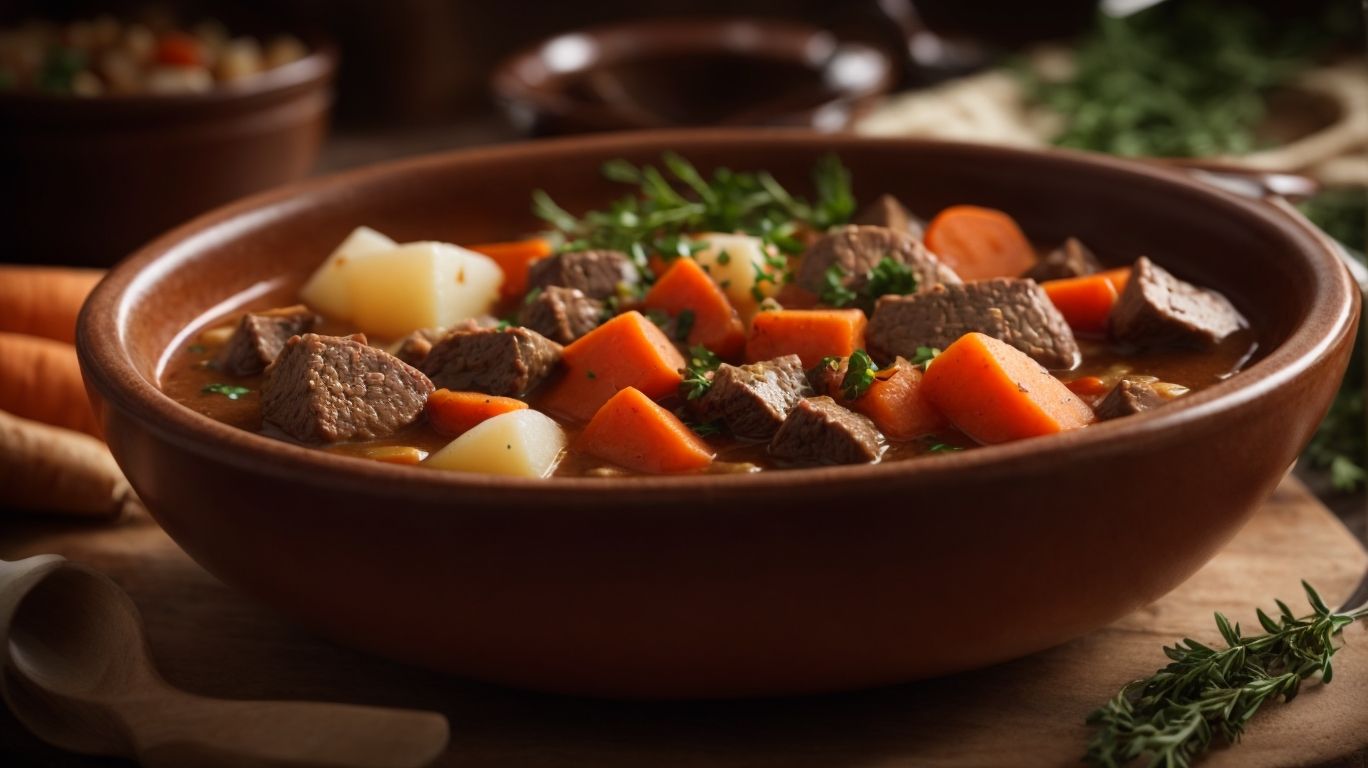
Credits: Poormet.Com – Steven Davis
Serving beef stew is a delightful experience that can be enhanced with the addition of complementing side dishes and careful plating techniques. The ultimate goal is to present a visually appealing and satisfying meal to enjoy.
Regarding pairing side dishes with beef stew, consider options like fluffy mashed potatoes or buttery egg noodles that not only complement the rich flavors of the stew but also add a variety of textures to the dish.
- For a healthier twist, roasted vegetables such as carrots, Brussels sprouts, or asparagus can provide a colorful and nutritious addition to the meal.
- Regarding plating the beef stew, using a rustic-style bowl or a shallow serving dish can add a touch of charm to the presentation. Consider garnishing with a sprinkle of fresh herbs like parsley or thyme to elevate the visual appeal.
What are the Best Side Dishes to Serve with Beef Stew?
Accompanying beef stew with side dishes like buttery peas, sautéed mushrooms, or crusty bread can elevate the dining experience, offering a variety of textures and flavors that complement the comforting nature of the stew.
Peas, with their vibrant color and fresh taste, bring a pop of sweetness that cuts through the richness of the beef stew. The earthy notes of mushrooms, whether roasted or pan-seared, introduce a savory depth that harmonizes perfectly with the hearty flavors of the stew. A slice of crusty bread serves as a perfect vehicle for soaking up the flavorful gravy, enhancing every spoonful of the stew. Consider pairing these:
- side dishes with a light salad tossed in a tangy vinaigrette to add a refreshing contrast to the meal. The combination of these comfort foods creates a well-rounded dining experience that satisfies both the palate and soul.
What are the Tips for Plating Beef Stew?
When plating beef stew, garnish with fresh parsley to add a pop of color and freshness.
Consider sprinkling chopped parsley on top of the stew right before serving to enhance both the visual appeal and flavor profile. The vibrant green hue of the parsley provides a beautiful contrast against the rich browns and reds of the stew. To further elevate the presentation, you can experiment with different parsley arrangements, such as scattering whole leaves around the edges of the plate or creating a parsley garnish pile in the center.
How to Store and Reheat Beef Stew?
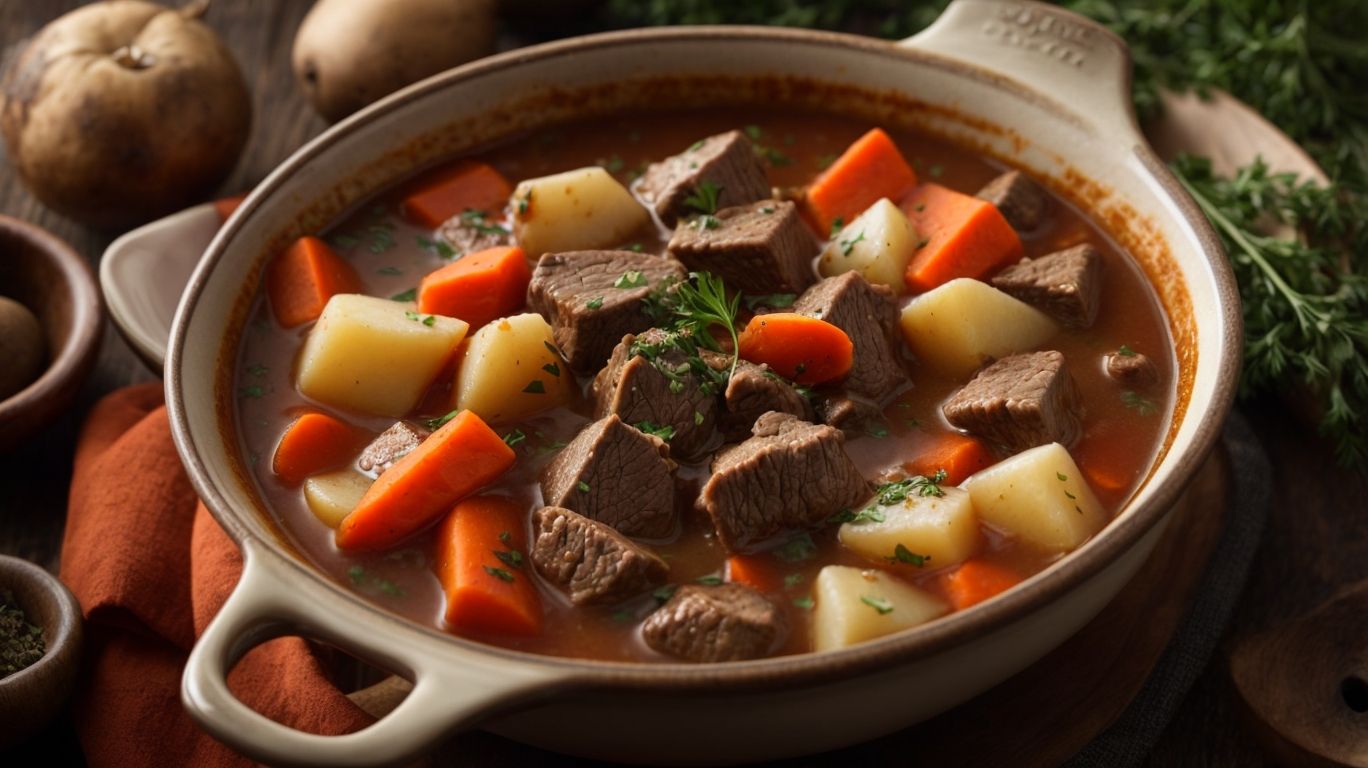
Credits: Poormet.Com – Adam Anderson
Properly storing beef stew in airtight containers in the refrigerator ensures its freshness and longevity. When reheating, use gentle heat methods to preserve the stew’s flavors and textures for a delicious meal every time.
By sealing the stew in airtight containers, you are protecting it from absorbing other odors in the fridge, preventing any unwanted tastes. Remember to cool the stew completely before refrigerating to avoid condensation, which can lead to sogginess. When reheating, opt for methods such as simmering on low heat or using a microwave with a gentle setting to prevent overcooking and maintain the rich flavors.
What are the Best Storage Methods for Beef Stew?
During cold weather, storing beef stew in the refrigerator can provide comfort and convenience for future meals. Opt for airtight containers to maintain freshness and ensure the stew retains its delicious flavors.
Refrigerating beef stew is not only a practical option but also a safe one when it comes to preserving food. The cold temperature of the refrigerator helps to slow down bacterial growth, keeping the stew fresh for longer periods. This is especially crucial during winter months when the chilly weather can make food spoil more quickly if left out. By transferring your delicious beef stew into airtight containers, you create a barrier that prevents outside odors from seeping in and maintains the integrity of the flavors.
What are the Steps for Reheating Beef Stew?
When reheating beef stew, consider adding a splash of water or broth to maintain moisture levels. For extra thickness, a roux made from flour and balsamic vinegar can enhance the stew’s richness and flavor profile.
Start by placing the leftover beef stew in a saucepan over medium heat. To prevent sticking and ensure even heating, stir occasionally. Once the stew starts simmering, add a small amount of water or broth, stirring gently to incorporate and prevent scorching. This step helps revive the flavors and textures.
For a velvety consistency and an added depth of taste, consider thickening the stew by creating a roux. Begin by melting butter in a separate pan, then slowly whisk in flour to form a smooth paste. Gradually incorporate balsamic vinegar for a tangy kick. Once the roux is well-blended, spoon it into the simmering stew while stirring continuously until the desired thickness is achieved.
Frequently Asked Questions
How to Cook Meat for Beef Stew?
Cooking the perfect beef stew starts with properly preparing the meat. Here are some commonly asked questions about cooking meat for beef stew:
1. What type of meat should I use for beef stew?
For the best results, use a tough, flavorful cut of beef such as chuck or bottom round. These cuts are perfect for slow cooking and will become tender and juicy in the stew.
2. Should I marinate the meat before cooking?
While marinating can add extra flavor to the meat, it is not necessary for beef stew. The long cooking time in the stew will help to tenderize and infuse the meat with flavor.
3. How do I properly cut the meat for beef stew?
Cut the meat into 1-2 inch cubes, making sure to trim away excess fat. This will help the meat cook evenly and prevent the stew from becoming overly greasy.
4. Can I use frozen meat for beef stew?
It is recommended to use thawed meat for beef stew. This will ensure that the meat cooks evenly and helps to prevent food safety concerns.
5. Should I brown the meat before adding it to the stew?
Browning the meat before adding it to the stew can add extra flavor and help to develop a richer color in the stew. However, if you are short on time, you can skip this step and add the meat directly to the stew.
6. How long should I cook the meat in the stew?
The meat should cook for at least 2-3 hours in the stew, or until it is fork-tender. This will ensure that the meat is fully cooked and tender, and the flavors have had time to develop.

